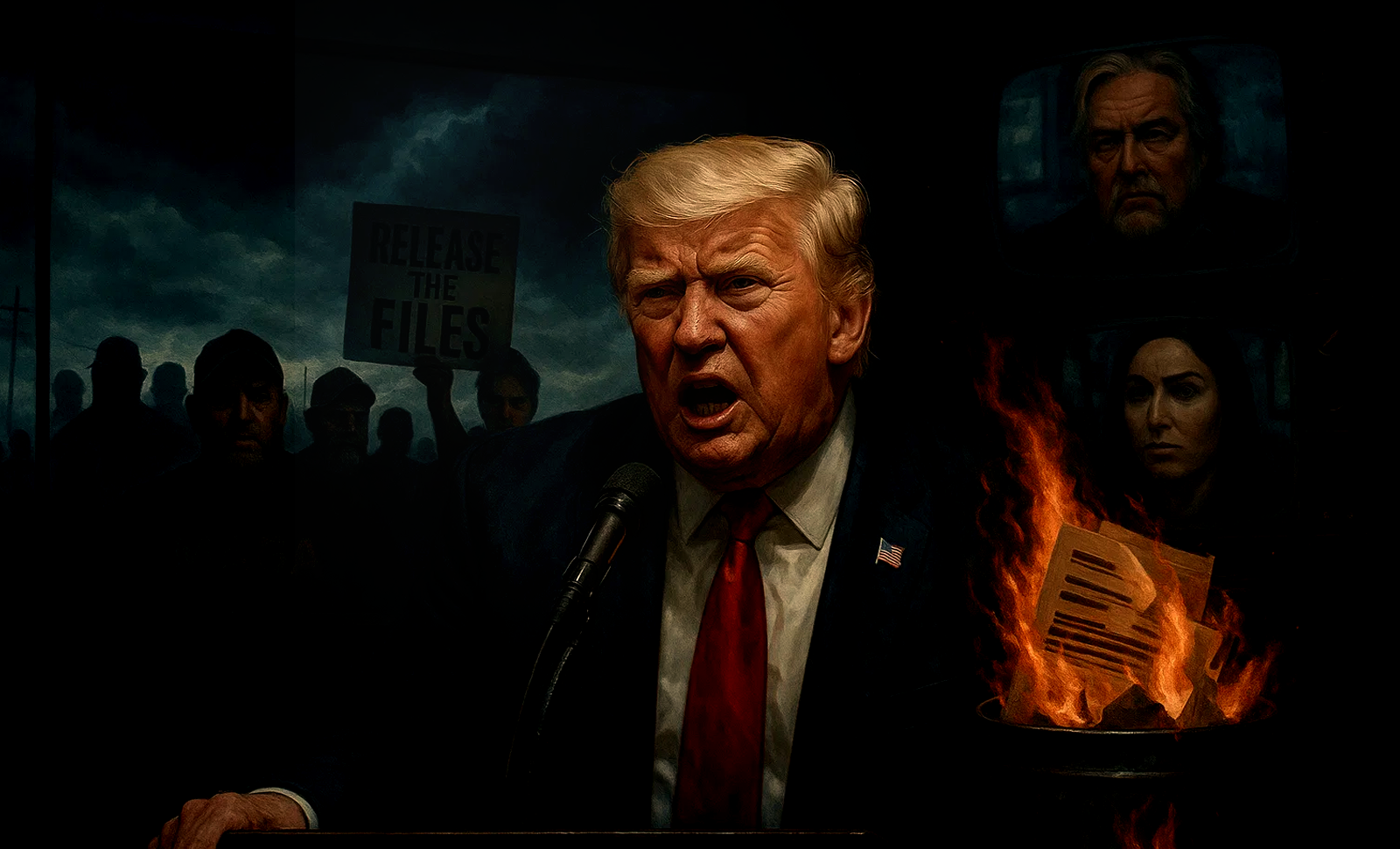The Washington Eye
The long-simmering tension between Donald Trump and parts of his most loyal base has come to a head over the fallout from the Jeffrey Epstein files. At the heart of the conflict lies not just conspiracy, but a deeply personal rupture, rooted in a perception that Trump is dismissing the very transparency and anti-elitism that galvanized the MAGA movement. While Trump once hinted that revealing Epstein’s alleged “client list” would expose entrenched corruption, recent confirmations that no such list exists have ignited a backlash among MAGA influencers and grassroots activists. Now, Trump’s base is showing unprecedented fractures, not from external pressure, but from within.
A Hoax or a Cover-Up? Trump’s Attack on Believers
Over the past week, Trump has responded with public contempt toward those still pressing for answers about Epstein’s network, labeling continued interest in the documents a “hoax” and calling his own followers “weaklings” and “stupid” for falling for it. For a movement that was built on rejecting elite narratives, this pivot has landed as both insulting and suspicious. Even former Trump allies like Steve Bannon and Dan Bongino have questioned the administration’s abrupt about-face, asking why the Epstein files (previously heralded by Trump himself) are now being shut down with such force, according to Politico.
MAGA Media Mobilizes Against Trump’s Dismissal
Prominent MAGA-aligned media figures have not held back. Laura Loomer, once a fierce defender of Trump, has openly speculated that the former president is hiding something. Others have gone further, suggesting a betrayal of the populist values Trump claims to represent. On social media and in conservative podcasts, these voices are amplifying calls for further DOJ investigations or even a new congressional inquiry. In an unusual rebuke, Speaker Mike Johnson joined Democrats in a recent bipartisan vote to push for the release of additional Epstein-related documents, defying the party line to emphasize transparency over political expedience.
Why This Rift Matters
This rupture signals far more than a policy disagreement. It represents a breakdown of trust between Trump and the grassroots movement he once embodied. The MAGA base, particularly its conspiratorial wing, has long prized its skepticism of official narratives. Trump’s mockery of those seeking truth about Epstein runs counter to that ethos, alienating a cohort that once saw him as the last honest voice in a corrupt system. The fallout threatens not only Trump’s grip on narrative but the coherence of a movement that often values loyalty above all.
It also highlights a deep contradiction. While Trump urges his followers to focus on his economic and policy achievements, many see his dismissal of the Epstein issue as proof that he is becoming the very insider he once promised to expose. As long as this story remains unresolved, it will compete with other campaign priorities and potentially distract from electoral messaging. In framing the controversy as a distraction or a Democratic trap, Trump may be underestimating just how important symbolic battles remain to his political base.
Lastly, the rift offers a rare opportunity for critics, on the left and right, to question Trump’s consistency and credibility. If he once promised revelations and now calls those expectations foolish, it opens him to charges of manipulation. With the midterms approaching, this tension could fracture GOP unity or fuel primary challenges from those looking to re-ignite a more combative, anti-establishment flame within the movement.
Strategic and Electoral Implications
This rupture exposes vulnerabilities in Trump’s political machine at a time when loyalty is essential. The sense of betrayal among some of his most passionate supporters could reduce turnout, fracture digital organizing efforts, or even spark third-party flirtations in key states. Moreover, it hands Democrats and media critics a potent narrative: that Trump is not only inconsistent, but afraid of sunlight.
It also poses a strategic conundrum for the GOP more broadly. As leadership figures like Speaker Johnson buck Trump’s narrative, they risk creating an institutional divide within the party that mirrors the cultural divide among its bases. If other Republicans are forced to choose between Trump’s line and the calls for transparency, the Epstein controversy could become a loyalty test with real electoral consequences.
Finally, the dispute threatens to reorder the hierarchy of MAGA influence. Figures who align with the base’s anti-elite impulses may rise in prominence, potentially challenging Trump’s once-unassailable position. Whether this leads to new candidates, realignment within conservative media, or simply deeper cynicism, the result is the same: Trump is no longer entirely in control of the movement he built.
A Final Note: Looking Ahead
One potential scenario is that Trump attempts a tactical retreat by supporting limited document releases or appointing a figurehead to lead a superficial review. This would be aimed at placating critics without inviting further scrutiny. However, such half-measures may only reinforce the sense of obfuscation.
Alternatively, Trump may choose to double down on his “hoax” narrative, pushing the idea that continued focus on Epstein is part of a broader psychological operation to discredit him. This strategy could harden his support among moderates within MAGA who are more focused on policy, but it risks further inflaming the conspiracy-prone corners of his base that feel abandoned.
A third possibility is that the story simply fades under the weight of other crises or headlines. But the damage to trust may persist beneath the surface, weakening the cohesion of a movement built not just on ideology, but on emotional fidelity to a leader who promised to never flinch in the face of elite power. Whether temporary or permanent, the rift is real—and it leaves Trump more exposed than he has been since his emergence in 2015.

















